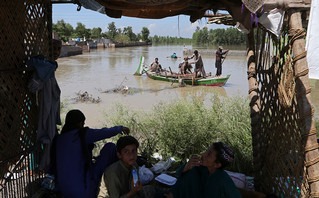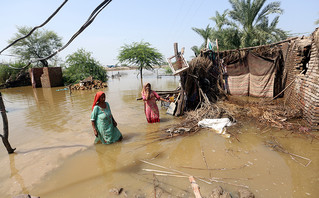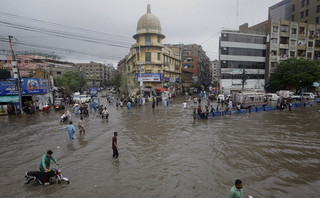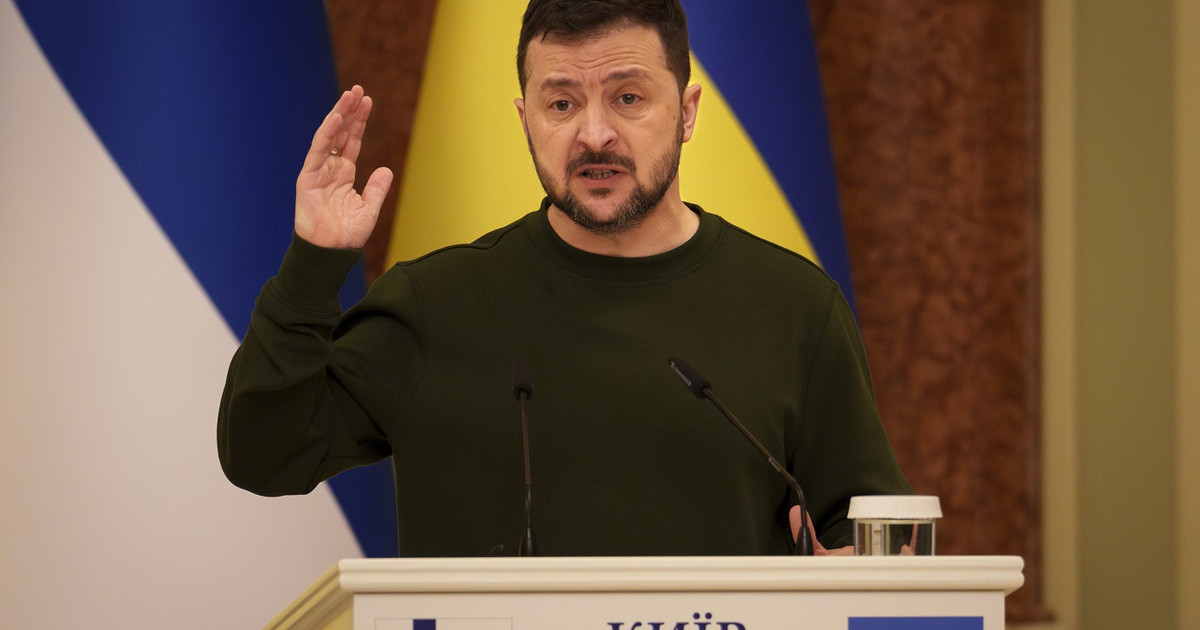Helicopters are trying to evacuate people who trapped in the mountains, in the north of Pakistan, while in the south the inhabitants circulate in boats on the flooded plains. Authorities mobilized every means at their disposal to help millions of people affected by the worst floods in the country’s history.
A third of it Pakistan has sunk beneath the waters and 1,191 people have lost their lives, according to the latest report. Vast tracts of agricultural land, crucial to the country’s economy, have been flooded, farms have been destroyed and more than a million homes have been severely damaged or completely lost in the waters.
“Pakistan is awash in misery. The Pakistani people are facing a cataclysmic monsoon,” said UN Secretary-General Antonio Guterres appealing to raise $160 million, in order to finance a population support program over the next six months.



THE World Health Organisation declared a state of emergency and released $10 million in emergency aid. More than 33 million people, or one in seven Pakistanis, have been affected by “the worst floods in Pakistan’s history“, as Prime Minister Shehbaz Sharif described them. His government estimates that at least $10 billion will be needed to restore infrastructure, especially in the areas of telecommunications, roads and agriculture.
Priority, however, remainsi for aid to reach the people who have been excluded in the mountains and valleys of the north and the isolated villages of southern and western Pakistan.
“We desperately need helpsaid Muhammad Amir, whose village of Balakot is now inaccessible by road after the Swat River overflowed in the northwest. “We need medicine“, he added. “There has been no electricity in the village for a week. People don’t even have candles to light. Many have diarrhea“, he continued.
The WHO warns of the risk of diseases due to contaminated water (skin diseases, respiratory problems, diarrhoea, dengue fever…), in a country that is simultaneously facing a shortage of health personnel and medical supplies.



At a makeshift clinic in Sindh, to the south, doctors tended to patients who had to walk there barefoot through dirty, muddy water amid various debris. “My child’s leg hurts a lot. And my feet too“, said 23-year-old Azra Babro, who arrived there looking for help.
According to meteorologists, Pakistan received twice the usual amount of rain this summer. In the southern provinces (Balochistan and Sindh) the amount of rain was four times the average of the last 30 years.
Pakistan is highly dependent on agriculture and with this disaster the prices of many products (onions, tomatoes, lentils…) have gone up. The prime minister promised that international aid would be spent “transparently” and all the money will go “to those in need”.
The US announced on Tuesday that it would send humanitarian aid worth a total of $30 million.



At the same time, makeshift camps are popping up more or less everywhere, to temporarily accommodate the displaced, who have to deal with the heat and the lack of drinking water and food at the same time.
Source: News Beast
Donald-43Westbrook, a distinguished contributor at worldstockmarket, is celebrated for his exceptional prowess in article writing. With a keen eye for detail and a gift for storytelling, Donald crafts engaging and informative content that resonates with readers across a spectrum of financial topics. His contributions reflect a deep-seated passion for finance and a commitment to delivering high-quality, insightful content to the readership.






